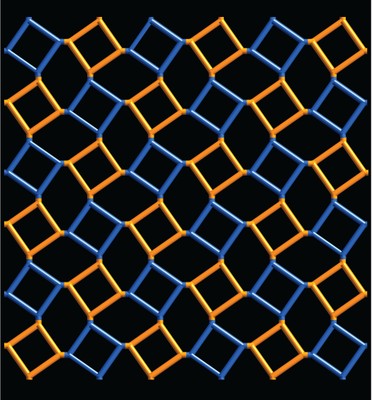Dancing Squares or a Hinged Plane Tessellation
| What if applet does not run? |
Paul Brown
A grid of squares can be hinged together at pairs of vertices in such a way that any square can be rotated 90 degrees. This rotation causes the grid to expand, form a checkerboard pattern and eventually reform as a grid with all squares rotated 90 degrees (some clockwise, some counterclockwise.) A similar effect is possible with other tessellations of regular polygons, and with semi-regular tessellations.
The name "hinged" tessellation was originally given to structures of this form by Wells (1988) and an example of a hinged semi-regular tessellation was provided. This topic has now been developed by Frederickson (2002).
There is another way of looking at the configuration. Starting with a square grid we are allowed to distort some of the squares while maintaining the directly adjacent quadrilaterals square. In the above applet the distorted squares have been loosened into rhombi. In the applet below, the square shape is further relaxed to become a parallelogram.
| What if applet does not run? |
In the News
Penn State reasearchers have recently reported a discovery of a new kind of symmetry.

A lattice composed of two repeating squares that represent molecular structures, one rotated clockwise (color coded blue) and another counterclockwise (color coded orange) with respect to each other -- such structures have many more symmetries than had been recognized before the paper by Gopalan and Litvin (May 2011, Nature Materials). Such new symmetries also arise in helical structures such as DNA, proteins, and sugar crystals. These new symmetries lead to the prediction of new properties of these crystals that relate to these rotations, called "roto properties." Applications range from the discovery of materials that allow electrical control of magnetism to new insights into well-known crystals such as quartz and organic crystals.
Credit: Penn State University, Gopalan lab, Ryan Haislmaier
References
|Activities| |Contact| |Front page| |Contents| |Geometry|
Copyright © 1996-2018 Alexander Bogomolny
73582363
